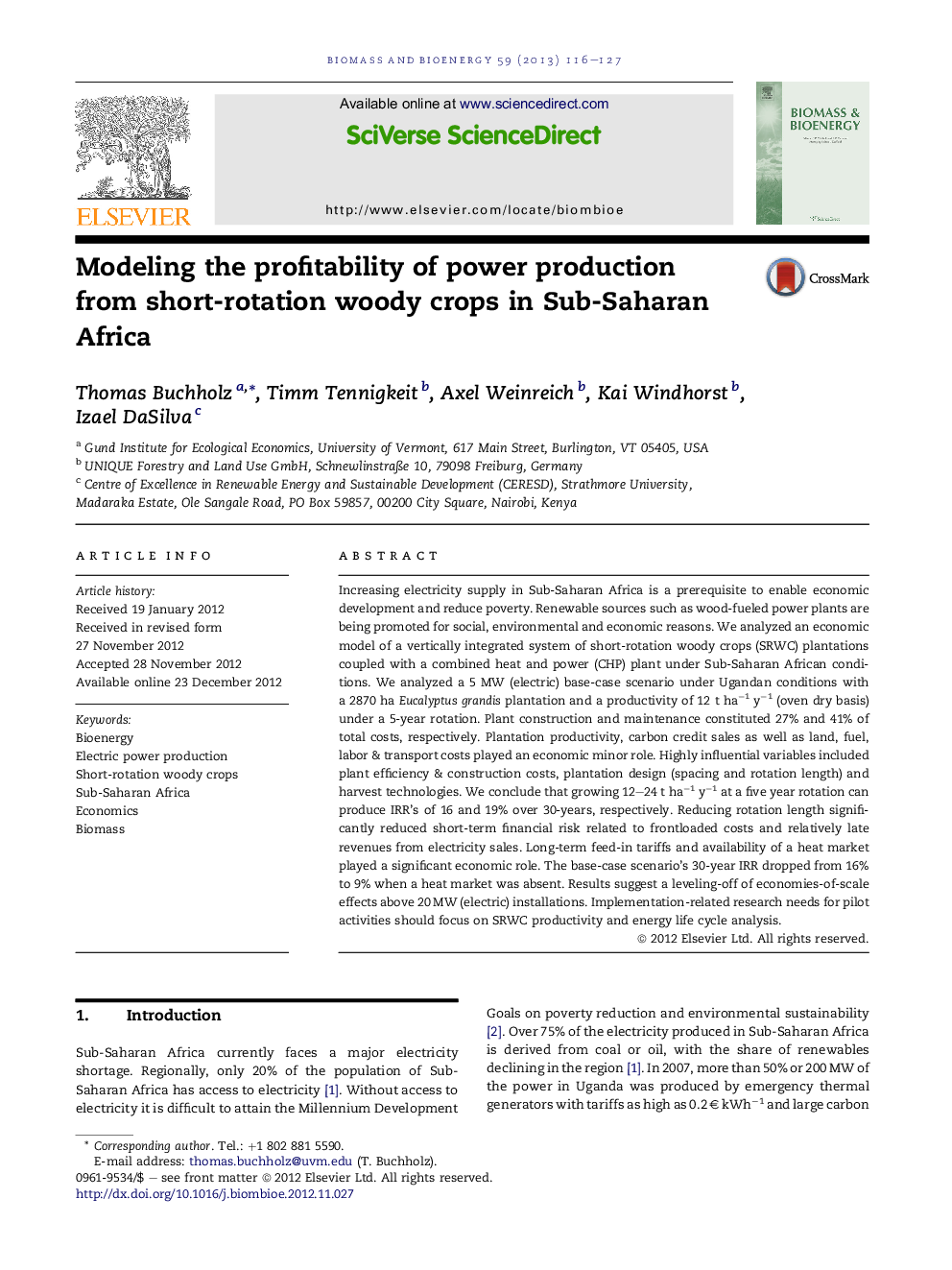| کد مقاله | کد نشریه | سال انتشار | مقاله انگلیسی | نسخه تمام متن |
|---|---|---|---|---|
| 677012 | 1459834 | 2013 | 12 صفحه PDF | دانلود رایگان |

Increasing electricity supply in Sub-Saharan Africa is a prerequisite to enable economic development and reduce poverty. Renewable sources such as wood-fueled power plants are being promoted for social, environmental and economic reasons. We analyzed an economic model of a vertically integrated system of short-rotation woody crops (SRWC) plantations coupled with a combined heat and power (CHP) plant under Sub-Saharan African conditions. We analyzed a 5 MW (electric) base-case scenario under Ugandan conditions with a 2870 ha Eucalyptus grandis plantation and a productivity of 12 t ha−1 y−1 (oven dry basis) under a 5-year rotation. Plant construction and maintenance constituted 27% and 41% of total costs, respectively. Plantation productivity, carbon credit sales as well as land, fuel, labor & transport costs played an economic minor role. Highly influential variables included plant efficiency & construction costs, plantation design (spacing and rotation length) and harvest technologies. We conclude that growing 12–24 t ha−1 y−1 at a five year rotation can produce IRR's of 16 and 19% over 30-years, respectively. Reducing rotation length significantly reduced short-term financial risk related to frontloaded costs and relatively late revenues from electricity sales. Long-term feed-in tariffs and availability of a heat market played a significant economic role. The base-case scenario's 30-year IRR dropped from 16% to 9% when a heat market was absent. Results suggest a leveling-off of economies-of-scale effects above 20 MW (electric) installations. Implementation-related research needs for pilot activities should focus on SRWC productivity and energy life cycle analysis.
► Economic modeling of short-rotation woody crops (SRWC) coupled with CHP system.
► Essential role: plant construction costs & efficiency, rotation, harvest technology.
► Minor role: land, fuel, labor & hauling cost, SRWC productivity, carbon credit sale.
► Long-term feed-in tariffs and heat markets are key to economic viability.
► Determining productivity of SRWC systems requires additional research efforts.
Journal: Biomass and Bioenergy - Volume 59, December 2013, Pages 116–127